Nanoactive RAL, INCI name: Retinal, CAS: 116-31-4.
Product Name: Nanoactive RAL, BioaActive Retinaldehyde; BioActive Retinal; Soluble Retinal; Soluble Retinaldehyde;Nano Liposomal
Nanoactive RAL is a novel retinal nanoliposome formulation (NanoLiposomal RAL).
A new liposome preparation. RAL has the characteristics of retinoic acid in the skin, and is better tolerated than retinoic acid. It directly interacts with protein receptors in cells, stimulates epidermis to accelerate regeneration, increases the thickness of the stratum corneum, and makes the skin tighter and more orderly. It also accelerates the production of collagen in the dermis layer, prevents the damage of UV to collagen, inhibits the increase of MMP caused by UV, and makes the skin more elastic; the unique aldehyde-based structure has a very good effect on P. acnes, etc., and effectively improves acne skin. Large amounts of retinal, retinol, retinol retinate (15498-86-9), HPR(893412-73-2) and other Vitamin A kind products of pharmaceutical grade are available.
Description:
Retinaldehyde (RAL), also known as vitamin A aldehyde, is a derivative of retinol after oxidation. It is formed by oxidative cleavage of β-carotene. If reduced, retinol can be attained; If oxidized, retinoic acid can be attained.Retinoic acid。”. The role of retinoic acid (Vitamin A) in skin diseaseis very extensive, but due to local irritation, its clinical application is limited to some extent.Retinaldehyde is an intermediate metabolite of natural retinoic acid and has similar biological activity as retinoic acid. But the skin is significantly more tolerant to retinoic acid.
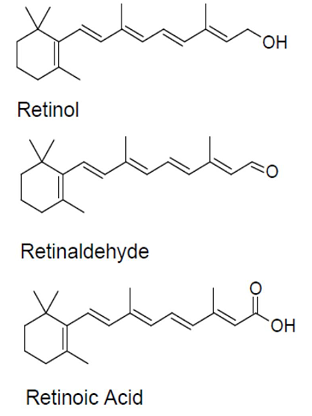
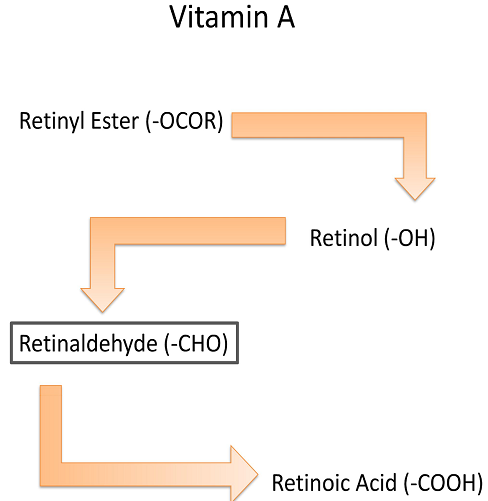
The main forms of vitamin A and their interconversion
Retinal has many target on the skin. It can be used as a skin care product to produce a variety of effects such as anti-aging, skin rejuvenation, whitening, anti-wrinkle, acne, keratin, etc. It is an emerging high-efficiency natural active substance. Retinal is hardly soluble in water while easy to be oxidized and discolored, which limits its application in cosmetics. Nano actives with a particle size of less than 30 nm developed by nano-transmission system (NDS) enable retinals to be steadily wrapped in nano-carriers, greatly improving the absorption efficiency and bioavailability. This overcomes the original defects and maintain the advantages and enables a more convenient and wider range of uses.
Skin care effect
The large use of non-physiological doses of exogenous retinoic acid can cause an overload of the retinoic acid-dependent pathway in the skin, causing adverse reactions such as skin irritation. RAL is a natural metabolite of retinol and a direct precursor of retinoic acid, and it also has similar biological activity to retinoic acid. The advantage of RAL compared with retinoic acid is its multi-directional metabolism, that is, the excess RAL can be rapidly reduced to retinol, then stored and inactivated in the form of retinol, and this “reverse metabolism” is not present in retinoic acid. After it is absorbed by the skin, most of it is converted to retinol vinegar stored for slow release, and a small amount of RAL is oxidized to retinoic acid by keratinocytes in differentiation-dependent manner, while a very small amount of retinoic acid is can exert significant biological effects in cells. This can avoid skin adverse reactions caused by high doses of retinoic acid. Clinical observations also show that topical RAL creams are well tolerated compared with retinoic acid and can be applied to sensitive areas. The topical RAL cannot absorbed by human blood. The levels of various vitamin A acids in the blood also cannot be affected.
RAL needs to be activated by the conversion of enzymes in keratinocytes to retinoic acid, so RAL has similar biological activity as retinoic acid. One of the indicators of retinoic acid activity is to induce the expression of retinoic acid binding protein (CRABP-2) in cells. External RAL can evidently induce the expression of CRABP-2 mRNA and protein. The topical natural retinoic acidcan also induce the expression of nuclear receptor in retinoic acid . Like retinoic acid, RAL also functions to regulate cell proliferation and differentiation. It can increase epidermal DNA synthesis, increase epidermis thickness, induce 50kD keratin, and reduce 7OkD keratin mRNA expression. Inducing positive keratinization, reducing 65kD keratin mRNA expression, and increasing filaggrin and loricin mRNA expression. In addition, RAL is also involved in the regulation of neovascularization in the skin, inhibiting the production of vascular endothelial growth factor by keratinocytes. It can repair the elastic fibers and collagen damage induced by UVA. RAL is also capable of dissolving acne and the direct sterilizing effect towards propionibacterium acnes. Natural retinoic acid play an important role in epidermal differentiation, dermal remodeling and curing skin inflammation. Retinaldehyde as an important intermediate metabolite of natural retinoic acid has both biological activity similar to that of retinoic acid and is well tolerated by the skin, thus it is given wider application in cosmetics.
Retinaldehyde can repair elastic fiber and collagen loss caused by UV:
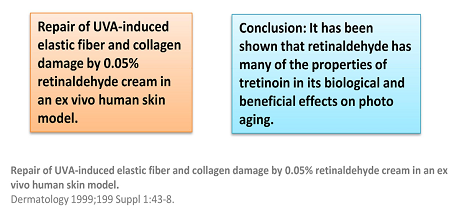
Retinaldehyde prevents skin aging caused by ultrasound and fluid
technology:
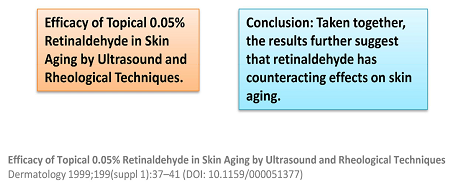
Retinaldehyde can effectively improve skin photoaging symptoms:
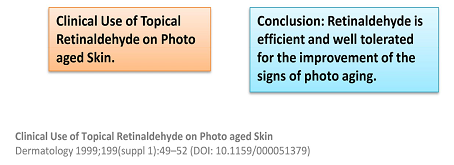
Retinaldehyde and retinal are well tolerated, while retinoic acid is more irritating
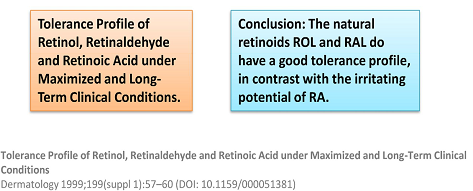
Retinaldehyde can effectively inhibit epidermal melanin
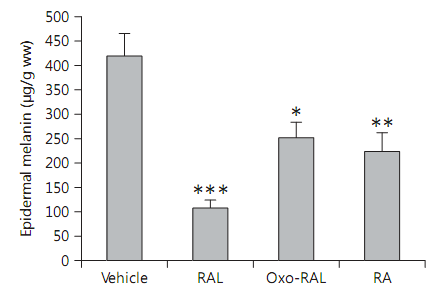
Features
- NanoActive Retinaldehyde uses FDA GRAS grade materials for high safety
- NanoActive Retinaldehyde has good heat, pH and sheer stability and is easy to use.
- NanoActive Retinaldehydegreatly enhances the stability and bioavailability of retinal
- NanoActive Retinaldehyde can improve the stability of other active matters in the product and facilitate absorption
- NanoActive Retinaldehyde is 100% water soluble and 100% oil soluble, allowing a wide range of uses.
Applications
- Wrinkle repairing: promote collagen and hyaluronic acid synthesis, increase skin thickness and elasticity, repair the wrinkle and firm the skin.
- Whitening and freckle removing: inhibit melanin synthesis, reduce pigmentation, whiten the skin and remove the freckle.
- Anti-aging: anti-oxidation, anti-skin-aging
- Skin-refreshing: renewal of keratin, refresh the skin.
- Acne Treatment: sterilizing propionibacterium acnes and streptococcus, etc., treating acne and removing acne marks
- Curing of skin photoaging
Use: Add it at room temperature; recommended dosage: 1-5% The optimum pH range of the system is 3.0-6.5, and the finished product should avoid direct exposure to sunlight (using opaque packaging). It is recommended to add UV absorber to day care products.
Storage: keep it away from light at a temperature below 25℃.
